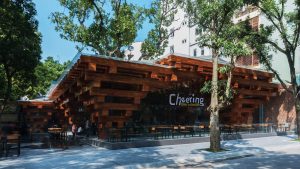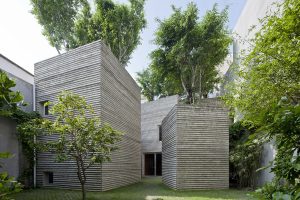
The prestigious Arcasia awards (Architects Regional Council Asia) are back! And, for the first time, the same is being hosted by the Indian Institute of Architects (IIA). The award, rebranded as AAA in 2013, was initiated to acknowledge the inspirational and exemplary work done by architects in Asia. It also recognises the efforts undertaken by architects to implement important architectural elements such as understanding of cultural context, integration of vernacular principles, sustainability, among others in their work. The award explores the nuances of current Asian structures, and if the same has been able to seamlessly incorporate the traditional values into the more modern architectural elements. The award aims to sustain the unique Asian architectural spirit and create a platform that enables discussions, debates, and design a blueprint that will show the way forward. Ar.Divya Kush, the President of IIA is the award convener. In an interview with Cindrebay, Award Coordinator, and Principal Architect, BSArchitects, Brijesh Shaijal speaks about the need, the criteria, and the perceived impact of the awards.
“This is an Asia-specific award that tries to celebrate the unique architecture of Asia. The last edition of the award was hosted by Hong Kong and this time around it is being held in Jaipur, India from May 24 to 26,” says Brijesh. “Non-Asians can also apply for the award, but their projects should be in Asia,” he adds.

A platform to discuss
This platform, he continues, was created to discuss, debate, and most importantly comprehend how the existing value system can seamlessly flow into the ever-changing norms of modern Architecture. “One of the questions that architects are usually compelled to answer is how to assimilate the traditional with the modern? In this race for innovation and modernism, it is important for us not to forget our prevalent cultural roots, our climatic conditions, and other elements that make us unique. Among other things, the jury will also take into account how the architect had made use of public spaces, and landscapes, ensuring that their built environment doesn’t clash with the natural environment,” points out Brijesh.

The competition is open to Indian architects, who have completed their Bachelors in Architecture, and have also been certified by the Council of Architects (COA). Architects who are registered with IIA can also apply.
The organisers have also included a new category, Interiors and unbuilt categories. “Last year, a similar category was introduced in the National Architecture awards too,” says Brijesh.
The parametres considered
The shortlisted projects will have to meet the rigorous standards decided by the board. “One of the important parametres includes creating a structure that is suitable for the climate of the region. A well-thought off project will take this important aspect into consideration,” he adds.
“It is also extremely imperative to note how well the architect has married the important principles of vernacular architecture and the innovativeness of their modern structure. The award also explores the sensitivity of the architect when it comes to dealing with the cultural context within which their structure exists,” says Brijesh.

Birjesh points out that Asian architects should not blindly follow western architecture as they are constructed under different circumstances. “Western structures are just as beautiful however those buildings suit their cultural and climatic conditions, and a similar structure here would be an oddity. Constructing a glass building in a tropical place just because it looks innovative according to the western standards is simply not a good idea. Glass building tends to retain heat, which in turn forces people to purchase Air Conditioners, creating a market for a product that was simply not required in the first place,” he points out.
He also points out that unlike Asian architecture, western structures and styles are well covered by the media. “Unfortunately, Asian architecture is not as well documented as their European counterparts. Asia is the home to many beautiful structures that flawlessly fulfils many important principles laid down by Architecture. Sri Lankan, Balinese, Indonesian structures still retain their cultural and vernacular elements,” he explains
Among the 22 countries that are participating, Brijesh has visited 15 of them. “Even though the structures in these countries are not well documented, it is hard to miss the intelligent planning and hard work that the architects have put into their creations. The innovations taking place in Japan and China are truly marvelous,” observes Brijesh.
However, in India, states like Rajasthan, Kerala, Tamil Nadu, among others have managed to integrate traditional elements into their modern structure, creating an impeccable balance.
The awards will take place on May 24 in Jaipur.
Learn more about the awards.
- Architecture & Interiors
- Careers & Professional Development
- General
- Green Architecture
- Interviews & Features
- News
